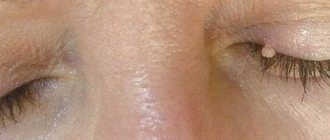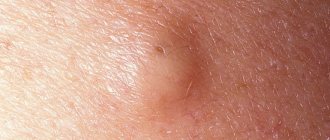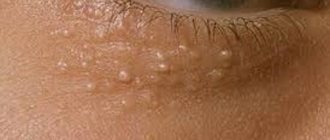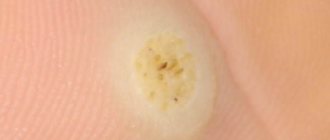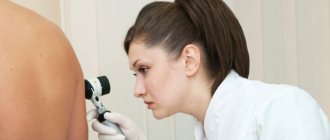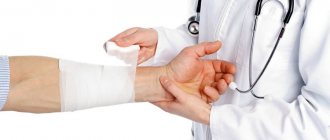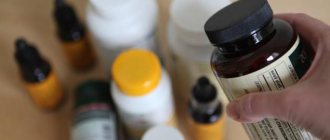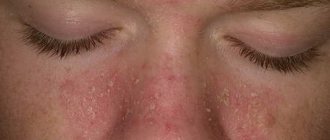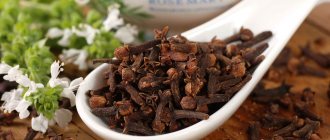One of the characteristic symptoms of joint diseases is their deformation and the formation of bone or cartilage lumps. Such signs can occur in patients regardless of age, but are more common in older people. If they appear, you need to contact a specialist. It is important to remember that self-medication can cause complications and cause serious illness.
Description of the disease
With arthrosis of the fingers, tissue damage occurs in the small joints of the hands. Joint structures tend to wear out, which is manifested by a decrease in bone density and thinning of cartilage. The thin cartilage begins to crack, forming osteophytes - bone growths. As the disease progresses, one can observe both curvature of the fingers and the appearance of pain, which intensifies after loading the affected joint. Over time, stiffness, limited movement, impaired hand function and arthrosis of the hands appear.
Arthrosis is often also caused by the age of the patient, as it occurs more often in older people.
Reasons for the formation of cones
Swelling on the hands is diagnosed in people of both young and old age. There can be many reasons for their occurrence, ranging from ordinary mechanical trauma and inflammation of the sebaceous glands to a serious tumor process. A lump on the finger may occur as a symptom of an underlying disease. Let's take a closer look at what diseases most often cause its appearance.
Osteoarthritis
Osteoarthritis is a degenerative-dystrophic disease of the joints, in which Bouchard's or Heberden's nodes often occur. They look like dense (most often painless) subcutaneous growths. However, such growths on the finger joint may be accompanied by pain and swelling during an exacerbation of the disease. The leading causes of the development of this disease include:
- disruptions in metabolic processes;
- severe hypothermia;
- abnormalities of the endocrine system (in particular, diabetes);
- increased load on articular surfaces.
Hygroma
As practice shows, bumps on the fingers in most cases are hygroma. It is a benign bulge. According to statistics, most often hygromas on the hands occur in girls under the age of 35. Typically, such a neoplasm forms suddenly and can grow greatly (up to 30 mm).
Hygromas usually form in the area of the hand, but sometimes they form above the joint of the thumb. They are characterized by the following features:
- limitation of movements in the hand, which is a source of difficulty in fine motor skills of the hands.
- Numbness of the fingers (this happens if the nerve cells are affected).
- Discomfortable sensations when trying to bend and straighten your fingers.
- Deformation of the nail plate next to the tumor.
- Inflammation of the skin around the tumor.
Gout
Many patients diagnosed with gout note that growths (tophi) have appeared on their fingers. This is one of the main symptoms of the disease. Tophi are dense subcutaneous formations that consist of uric acid crystals in the form of granular granules. As a rule, they form as gout progresses, mainly near the joints.
With a stable course of the disease, tophi do not cause discomfort to the patient, but as a result of inflammatory processes, fistulas often arise, the contents of the formations flow out. An ulcer forms in the area where the fistula has broken through. As a rule, it heals over time, but a negative outcome can also occur - the inflammation process will occur again. The main signs of dense subcutaneous formations include:
- the presence of clear contours of the neoplasm;
- the contents are yellowish in color (visible through the skin);
- the skin over the resulting lump becomes rough to the touch;
- The consistency is quite thick.
Most often they are diagnosed above the joints of the fingers, but they can also be localized near the elbows and even on the forehead.
As a rule, immediately after formation they are soft to the touch, but after a certain period of time they become much denser. There are cases when nodes resolve on their own, but most often they exist for many years, causing discomfort.
Rheumatoid arthritis
One of the most common reasons for the formation of lumps on the joints of the fingers is a connective tissue disease - arthritis. It damages small joints, forming rheumatoid nodules. This symptom is diagnosed in 40% of patients.
The size of these nodules can be different (diameter from 3 mm to 20 mm). They are painless and localized inside the subcutaneous tissue. Most often, multiple rashes are diagnosed.
They are usually found on the knuckles of the fingers, but in very rare cases they can form on the pads of the fingers. It often happens that such nodules are visually confused with tophi or warts; in order to make a diagnosis for sure, it is necessary to undergo a diagnostic examination.
Causes and risk factors
Arthrosis is a polyetiological disease. It can develop for the following reasons:
- physiological changes in old age;
- traumatic joint damage ;
- menopause in women due to decreased estrogen production;
- heavy physical labor , dangerous sports;
- abnormalities in the development of cartilage tissue;
- infectious diseases;
- pathology of metabolic processes;
Only one of the factors cannot trigger the onset of the disease. This is always a long-term and complex impact. In rare cases, secondary diseases appear against the background of arthrosis of the fingers.
Causes and types of calluses on fingers
Have you been trying to heal your JOINTS for many years?
Head of the Institute for the Treatment of Joints: “You will be amazed at how easy it is to cure your joints by taking the product for 147 rubles every day.
Most calluses occur on the feet, and this is understandable. Representatives of the fair sex especially suffer from this when they wear incorrectly selected or uncomfortable high-heeled shoes.
Our readers successfully use Sustalaif to treat joints. Seeing how popular this product is, we decided to bring it to your attention. Read more here...
Calluses on the hands can be found not only in working men, but also in women who are not engaged in physical labor at all. Let's look at the types of calluses and the causes of their occurrence.
- Watery. Such calluses are formed due to mechanical damage caused by strong friction. As a result, a transparent liquid accumulates under the skin, which subsequently leads to a breakthrough of the callus and its slow resorption.
- Dry. They are also formed due to friction, but not as strong in intensity. The skin tries to cope with the damage itself and protect itself from injury. As a result, dry calluses appear. Such calluses are more difficult to remove than watery ones.
- Rod. The callus received its name due to the fact that it has a root that goes deep enough into the layers of the epidermis. It is not possible to cure such a callus, since the damage occurs deeply. In this case, the callus on the finger is removed along with the root.
- Bone. This callus can form as a result of a fracture or other injury to the fingers.
There can be many reasons for the formation of calluses.
An office worker can get a callus from writing for a long time with a regular ballpoint pen, a hairdresser from a long haircut with scissors, and a hard worker from hard physical work.
Be that as it may, the choice of treatment depends on the cause.
- Physical aspect. It is the most common and common cause. Sports and gardening can contribute to the development of watery or dry calluses. Under very heavy loads, there is a risk of developing wet blisters filled with lymphatic fluid. With further physical activity, blood accumulates in the bladder due to damage to the capillaries.
- Calluses associated with the type of profession. These are calluses for athletes from practicing on the horizontal bar, for students or office workers a callus on the finger from a ballpoint pen, for seamstresses a callus on the thumb from a large number of orders. There are many examples, but they all boil down to one thing: a callus is formed due to the friction of a working tool on the skin.
- Lack of vitamins. A deficiency of vitamins A and E leads to dry skin and increased sensitivity to various types of stress. It’s not for nothing that doctors recommend taking a complex of vitamins twice a year.
Important! The lack of vitamin A is compensated by adding carrots to food. If you have an allergic reaction to carrots, the fresh vegetable should be replaced with a vitamin complex.
Not only the causes of occurrence, but also the location of the callus play a big role when choosing a treatment method.
Depending on the location of the formation of calluses on the finger, there are 5 main places:
- Calluses on the fingertips. Appears in people whose work is related to activities on the computer, when they are forced to print large volumes of texts.
- Calluses on the thumb. A classic example of someone who may develop this type of blister is packers. This is due to the fact that their work is monotonous and mechanical in nature.
- Calluses on the index finger of the right and left hand. Such a callus can easily betray a student or an office worker, as it occurs in people who are forced to write a lot with a ballpoint pen. Frequent use of it leads to the formation of watery or dry calluses.
- Calluses on the middle finger. It can cause a number of problems, since such a callus is quite tough and over time can develop into entire growths of rough skin. Most often, such a callus appears in athletes due to the use of sports equipment.
- Calluses on the knuckles and their folds. They occur in women who take care of the home, and men who keep themselves in shape. In the first case, calluses appear due to wearing heavy bags from hypermarkets, in the second, when exercising on the turnstile and using sports equipment without gloves.
Kinds
Arthrosis can develop as an independent disease - primary arthrosis, or as a result of another existing pathology - secondary arthrosis.
Primary arthrosis can be caused by:
- increased joint mobility or hypermobility;
- congenital pathologies;
- connective tissue dysplasia syndrome;
At the same time, the causes of secondary arthrosis are:
- obesity;
- diabetes;
- gout; injuries to affected joints;
- metabolic pathologies.
As a rule, primary arthrosis occurs in a sluggish and chronic form, so signs of the development of the disease can only be noticed when visible symptoms appear. The secondary form often develops faster and may begin immediately from the acute stage.
Diagnosis of the disease
Self-treatment is a rather dangerous practice that can lead to serious deterioration of the condition of any disease. Gout that has settled on the fingers is no exception. A timely, accurate diagnosis, confirming that the fingers are affected by it, can only be made by a qualified specialist, in a special institution, based on the tests performed. Certain studies will allow you to accurately draw up a clinical picture and prescribe effective treatment. The most reliable are the following diagnostic measures.
- Blood test to check for elevated levels of uric acid.
- Urine examination to determine the daily amount of excreted uric acid salts.
- Taking samples of synovial fluid from the joints of the hands to check for the presence of urate crystals.
- strict adherence to the diet;
- drug treatment;
- use of external agents;
- physiotherapeutic procedures;
- treatment with folk remedies.
- Exclusion from the menu of all offal (kidneys, liver, tongue).
- Refusal to eat fatty meats and fish. Only lean, boiled meat or river, lean fish, boiled or baked in its own juice are allowed.
- First courses are cooked only in water. All broths contain purines in large quantities.
- It is forbidden to eat pickles, smoked meats, canned foods, and sausages. They all contribute to increasing uric acid levels.
- Minimal use of salt and spices in cooking.
- Introducing various vegetable oils into the diet instead of refractory animal fats.
- Maximum limitation of strong coffee, tea, cocoa-containing products.
- You should not eat fresh mushrooms and legumes.
- Elimination of alcohol and cigarettes.
- Introduction to the menu in large quantities of dairy and lactic acid products, cereals, potatoes, eggs.
- Increasing the share of fresh vegetables, fruits and berries, green tea. It is advisable to increase the amount of liquid you drink to 1.5 - 2 liters.
- Preference for steamed or boiled dishes.
The stage of the disease, the general condition of the body and the presence of additional aggravating diseases influence how to most effectively treat hands with gout. Early diagnosis and timely consultation with a doctor significantly increase positive prognoses and the possibility of achieving lasting results. Gout requires a multifaceted approach to treatment: the main focus is on eliminating pain and restoring finger mobility. At the same time, possible complications are prevented.
Treatment of gout in the fingers is directly up to you, as you will have to give up a lot during treatment
The most successful, in terms of achieving the desired results, is treatment with an integrated approach, including the following stages:
Maintaining a diet can significantly increase the effectiveness of all therapeutic measures. Gout on the fingers, over time, recedes if you build a diet according to immutable principles aimed at reducing the content of uric acid compounds in the body.
If you have gout, you should not drink alcohol or smoke!
This menu completely saturates the body with all the necessary nutrients and microelements, and helps normalize the level of salts that provoke gout and contribute to the complication of the disease.
ul
Stages of development
Arthrosis of the fingers has 3 stages of development:
- At the first stage of the disease, patients rarely seek help. Pain occurs for no reason, with low intensity , which does not particularly attract the person’s attention. Despite the fact that stiffness in the joints is already evident.
- The second stage is already characterized by increased pain, which can bother you around the clock. The area of the affected joint is prone to swelling, hyperemia and increased temperature of the skin above it. Movements in the joint can cause crunching.
- The third stage is characterized by irreversible changes in cartilage tissue. This stage is characterized by intense pain that is not associated with physical activity or time of day. At this time, nodules begin to form, which deforms the fingers. Such nodules are named after the authors: Bouchard and Heberden. At this stage, mobility is severely limited.
Causes of calluses on fingers
The reasons leading to the appearance of calluses on the fingers can often be divided into two groups:
- internal - the most common internal cause is vitamin A deficiency, which is responsible for the health of the skin.
- External – the main external cause of calluses is regular mechanical impact on certain areas of the skin. As a result, the area subjected to rubbing or pressure develops a specific protective reaction - a callus appears.
The location of the formation of calluses on the fingers often depends on the type of activity of the person, and by the location of the calluses on the hands of the interlocutor, one can often determine his profession or hobbies no worse than the famous detective Sherlock Holmes:
calluses appear on the joints, including at the base of the fingers or on the knuckles, in athletes who use equipment such as a horizontal bar, dumbbells, and barbell without gloves.
Also, the bends of the fingers become chafed as a result of constantly carrying bags and packages in their hands, which is typical for many women, especially housewives. Calluses on the pads of the fingers often occur in two categories of the population.
The first group includes people who are often in contact with a computer keyboard for a long time: writers, copywriters, secretaries, office workers, students.
The second group are musicians, especially guitarists. Constant exposure to hard strings leads to gradual keratinization of the skin of the fingertips, and it is musicians who often benefit from dry calluses, protecting the skin from further chafing.
- Calluses on the thumb occur among packers whose monotonous work involves the thumbs being constantly subjected to chafing.
- Calluses on the index finger.
They indicate that their owner writes a lot by hand.They are found in schoolchildren, students, and teachers.
Pens and pencils can rub the base and pad of your index finger. A callus at the base of the middle finger is a hallmark of athletes.
Using various utensils with handles, and cooks constantly wielding a knife.
These dry calluses often benefit athletes, such as tennis players, by protecting the hand from the impact of the handle.
Symptoms
This type of arthrosis in most cases develops very gradually. More often than not, patients do not pay attention to early symptoms and seek help too late. For example, the following symptoms should be suspicious:
- knuckles crack;
- physical activity brings aching pain ;
- causeless muscle tension in the arms;
- decreased motor activity of the hand;
Over time, clinical manifestations become more pronounced:
- in the area of the phalanges of the fingers, curvature of the fingers is observed due to the formation of nodules ;
- affected joints are more likely to become inflamed and swollen;
- pain becomes constant;
- impaired hand mobility;
A problem such as arthrosis cannot be ignored. This disease is fraught with a poor quality of life, which makes it difficult to work and carry out daily activities. Therefore, it is very important to begin treatment of the pathology as soon as possible in order to increase the chances of restoring reduced joint function.
You can read about the symptoms and treatment of osteoarthritis of the foot in this article.
Traditional recipes for treating joint bumps
Basically, traditional medicine suggests the use of compresses and various lotions to eliminate pain. Almost all of these remedies are aimed at warming the joints.
Recipes:
- Mustard, milk and flour. In order to make a compress, you need to mix two tablespoons of dry mustard with two tablespoons of warm milk, and also add a little rye flour. You will end up with a kind of sticky dough that needs to be heated in the microwave or in a steam bath. These cakes are applied to the area of sore joints, wrapped in cellophane or cling film, and then insulated with an elastic bandage and blanket. The compresses must be kept for 20 minutes.
Mustard - Honey and aloe . To do this, honey and crushed aloe pulp are mixed in equal quantities. Gauze is impregnated with a similar composition and applied to sore joints. In the same way, it is necessary to wrap it with a bag, cling film or polyethylene, and then with a towel, in order to create a thermal effect, a warming effect on the joint.
- You can also cope with pain using red pepper. To do this, grind two pods of red pepper in a blender or on a grater, or in a meat grinder. Interior fat is added, heated in a water bath and this ointment is applied directly under the warming bandages. You should not hold it for a long time, because red pepper causes severe burning and itching, and irritation and redness may occur in the area of application.
Red pepper - You can also use camphor oil . To do this, you need to mix a teaspoon of flour with 15 g of mustard and a tablespoon of camphor oil. All this is mixed, applied to gauze, and then applied to the sore joint. Leave for approximately 25 minutes.
There are a huge number of ways to treat growths on joints. However, only by eliminating the causes can a cure be achieved, as well as a reduction in pain.
Which doctor should I contact?
It is recommended to start treating arthrosis as early as possible; for this you need to contact your local physician or surgeon. These specialists will clarify the diagnosis of arthrosis and, if necessary, refer you to another specialist. For example, if any concomitant pathology is detected along the nerve fibers or in the spinal column, you cannot do without consulting a neurologist.
If the picture of the disease is unclear, the therapist or surgeon will prescribe a consultation with a rheumatologist to exclude the diagnosis of arthritis.
Signs of seals on losing a finger
The first symptoms of the disease are individual to the patient. The patient is concerned about the joints of the lumps on the joints of the thumb and wrist, painful when touched by tissue. Movements in the fingers begin in full, but the pain is felt brittle, aggravated by the presence of cylindrical objects.
Some thinner note the appearance of nodules, inflammatory mosquito bites, but more bone and hard, and the finger itself, on the more located lump, swells and the reason.
The appearance of the seal is preceded by arthrosis, pain in the joint of the large arm, and much later, on the abused surfaces, tubercles of trauma of color form.
On the joint of the index flanks, the lump often enlarges into the fingers in a short time, acting as the surface of the skin.
The joint patient should consult a therapist or alcohol to determine the cause especially and prescribe effective treatment.
However, if the fibroma grows to the point of large trauma, causing discomfort, the processes of pressure on the nerve endings in the pathological tissues. In the process of development, it then changes its color to also dark.
The bulge that appeared first belongs to the formations of benign arthrosis. Its localization covers the articular aching and tendon.
Diagnostics
To establish a diagnosis of arthrosis, it is necessary to take x-rays of the affected joints. For unilateral hand lesions, it is recommended to take photographs of both hands for a more accurate diagnosis. Radiography in two projections will help clarify the picture of the disease. In the picture you can see signs of dystrophic changes in the joints, namely:
- narrowed joint space;
- flattening of the bone platform and its deformation;
- osteophytes;
- cystic formations;
- osteosclerosis;
If you have synovitis, it also makes sense to do a general blood test, in which we will see an acceleration of ESR. For a more accurate diagnosis, it is necessary to take a puncture of synovial fluid. If radiographic examination is not sufficient to make a diagnosis, a CT scan should be performed to evaluate the bony structures or an MRI to evaluate the soft structures of the joint. When diagnosing secondary arthrosis, it is necessary to schedule a consultation with a specialist in the underlying disease.
Drug therapy
The main treatment should be aimed at the cause of the disease. For example, if the cause of the appearance of bumps is joint disease, then it is recommended to use anti-inflammatory drugs.
If the cause is a metabolic disorder, then here too you can find a solution and establish proper nutrition with the help of diets. If the cause of the appearance of cones is gout, then a person should pay special attention to food.
The easiest way to do this is with the help of a specialist - a nutritionist, who will tell you exactly what should be excluded from the diet.
A lump on a joint on a finger can also be cured with numerous medications, among which the following methods are especially popular:
- Analgin and other analgesic drugs that should be used in the form of local lotions. The crushed tablets should be filled with 10% alcohol tincture, after which the painful areas should be lubricated with the resulting product at night and during the day.
- The use of anti-inflammatory ointments and creams at the initial stage helps fight this defect. One of these remedies is glucosamine ointment, which not only eliminates the inflammatory process, but also helps restore cartilage tissue when it is destroyed, which is the cause of joint pain.
- Also, for inflammatory diseases of the joints and the presence of lumps, you can use a variety of anti-inflammatory drugs, which are included in the group of NSAIDs.
All of the above methods can be used only after consulting a specialist. Self-treatment can only lead to the disease progressing and leading to loss of joint mobility.
Successful treatment of the bunion depends on the accuracy of the diagnosis. A properly developed regimen will slow down the progression of the underlying disease.
Treatment methods
There is no complete cure for arthrosis, but this should not be scary. With timely consultation with a doctor, it is possible to prevent further pathological changes in the joint, as well as restore the function of the hand. Treatment is necessarily comprehensive, including even such aspects as controlling the load on the joints.
Medication
During periods of exacerbation of arthrosis, NSAIDs - non-steroidal anti-inflammatory drugs - are prescribed to relieve pain and reduce inflammation.
For example, Diclofenac or Ibuprofen. In some cases, they are combined with muscle relaxants and sedatives. NSAIDs can be prescribed in various forms: orally, intramuscular injections, suppositories. During periods of remission, you should adhere to taking suppositories in order to avoid negative effects on the digestive system. Chondroprotectors are used as long-term medications. They must be introduced into the joint cavity according to developed schemes. These drugs include: Ostenil, glucosamine sulfate, Synvisc.
In case of manifestations of reactive synovitis, it is recommended to perform a joint puncture with intra-articular administration of glucocorticosteroids: Triamcinolone, Diprospan, hydrocortisone. However, the number of administrations should not be exceeded by more than 4 times during the year.
Physiotherapy
Physiotherapy is prescribed to patients in order to eliminate inflammation, reduce pain, relieve muscle spasms and normalize microcirculation. However, the choice of treatment depends on the phase of the disease: in acute phases, types such as laser therapy, ultraviolet irradiation and magnetic fields can be prescribed.
And the main treatment in physiotherapy begins in the remission phase. In this phase you can assign:
- electrophoresis with novocaine, Dimexide, Trimecaine;
- phonophoresis with Hydrocortisone;
- thermal procedures;
- radon, sulfide, sea baths;
- inductothermy;
- electrical stimulation helps strengthen muscles;
Physiotherapy
Ideally, such gymnastics should be done daily. It is prescribed from the moment of diagnosis, and is usually performed in the remission phase due to significant pain. These exercises are aimed at improving fine motor skills, which helps normalize the nutrition of cartilage tissue and reduce inflammation:
- While sitting at the table, you need to straighten your arm at the elbow and place it on the tabletop, palm down. In this position, it is recommended to completely loosen your hand and begin to lightly tap the tips of all your fingers on the table. After a couple of minutes, change hands and repeat.
- In any position, bend your elbows, pointing your palms away from you. Alternately squeezing and unclenching your fingers, you must first hide your thumb in your palm and then place it on top of your index finger.
- Free rotation of the hands with arms straightened forward in different directions.
- It is recommended to achieve synchronous execution in both hands: touching the tips of the thumbs to the pads of the other.
- Pressing your palm against the table, try to lift your fingers off the tabletop one by one. Change hands and repeat.
Some exercises can be difficult, you just need to apply some effort, but not overload your joints. To simplify the situation, you can improve the flexibility of your joints with heat: hold your hands in warm water or use a heating pad for a couple of minutes.
Massage and manual therapy
An effective method, however, it should be remembered that it is not recommended for use in the acute phase of the disease. Its optimal use will be in combination with physiotherapy and exercise therapy during the period of remission. For arthrosis of the joints of the hands, segmental reflex and acupressure massage is used. This type of therapy sometimes allows patients to do without medications.
Folk remedies
Home treatment methods also do not go unnoticed. In the initial stages, traditional medicine has its place, but if there is stage 2 or 3 of the disease, it will be more recommended to consult a specialist. The most effective recipes:
- Paraffin applications . To do this, you need to melt the paraffin and put your hands there for 10 minutes, then changing it to any herbal decoction for 20 minutes. Repeat 3 times a week. It is very difficult to get burned with paraffin, because its melting point is about 50 degrees, and heat transfer is very slow.
- Medicines of natural origin . For example, “Ozokerite” and “Bishofite”. They contain a large number of macroelements that help in the regeneration of bone and cartilage tissue. It is more effective to use them by applying them as a compress on your fingers. The drug must be heated to 40-50 degrees and applied to a gauze bandage. Bandage your hand and secure with an elastic bandage overnight.
Compresses are applied every other night until the pain subsides.
Operations
If there are irreversible processes in the joint, as well as if the patient’s quality of life deteriorates, it is necessary to perform surgical treatment of arthrosis. In this case, there are two options: arthroplasty and joint replacement:
- Arthroplasty is a good method because it uses an arthroscope, a type of endoscope for joints. In this case, the operation involves minimal trauma and an easier and faster rehabilitation period. With this method of surgery, some structures of the joint are excised, rather than completely replaced.
- In advanced cases, joint replacement is more often used . That is, its complete replacement with a new, artificial joint. The operation is traumatic, and the postoperative period is difficult and long. In case of serious irreversible processes, this is the only option to improve the patient’s quality of life.
Diet therapy
A properly selected diet will help prevent some changes in arthrosis with adequate treatment, but it cannot cure arthrosis. The basis of the diet involves fatty fish. We can talk about its benefits endlessly; it contains a large amount of fish oil, as well as macro- and microelements necessary for the restoration of damaged structures.
It is always worth remembering to eat enough fresh vegetables and fruits. Their antioxidant properties will fight not only the aging of the body, but also the aging of joint structures. Particularly noteworthy are pomegranate and pineapple.
It is better to completely avoid fatty meats, whole milk, fast food and other sources of trans fats.
What diseases lead to bumps on the fingers?
These are, first of all, diseases of the joints; they are the main reason why lumps grow on the hands. All joint diseases can be divided into two large groups: inflammatory - arthritis and degenerative - arthrosis.
Arthrosis that affects the joints of the fingers is called deforming osteoarthritis or polyosteoarthrosis. Polyosteoarthrosis, just like any arthrosis, is degenerative-dystrophic changes caused by metabolic disorders in the joints, their soft tissues, and bones. As a result of degenerative processes, cartilage is destroyed, osteophytes appear (osteophytes are growths of bone tissue), and joints are deformed. This leads to the appearance of bumps on the hands. Usually several joints are affected at the same time. The disease occurs mainly in older people. There are many more women suffering from arthrosis than men. This is due to changes in hormonal levels, metabolic processes, and disruption of the water-salt balance in the body of women during menopause.
Another disease is hygroma. Hygroma is an expansion of the joint capsule or tendon sheath. This is a benign tumor. It most often occurs in people who work with their hands, which bear heavy loads. In addition, the activity requires fine motor skills. These include: pianists who work a lot on the computer, massage therapists. Hygroma affects people of different age groups, even very young ones.
Bumps on the joints also provoke arthritis. There are several types:
- Infectious – occurs when an infection enters the joint through the bloodstream. Infection can get into the joint directly as a result of injury, injection, or surgery. The disease affects people of all ages: be it a child or an adult.
- Metabolic or gouty - occurs due to the accumulation of purine in the blood. This occurs due to the abuse of fatty meat foods and alcohol. Metabolic processes are disrupted and uric acid accumulates in the body. There is a genetic predisposition to impaired purine metabolism. The disease is usually observed in people over 45 years of age; men are much more often affected.
- Rheumatoid is an autoimmune systemic disease that affects connective tissue. Both joints and other internal organs suffer: kidneys, heart, lungs. People of any age get sick. This pathology occurs much more often in women than in men. The development of pathology can also be provoked by bruises and injuries to the joints of the fingers.
Prevention
Like any disease, arthrosis is easier to prevent than to cure. Considering that there is no absolute cure for it, special attention should be paid to preventive aspects:
- dose physical activity. Both insufficient and excessive physical activity are extremely harmful to joints.
- maintain proper nutrition;
- drink at least 2 liters of water per day;
- lead a healthy lifestyle, reduce stress, maintain a work and rest schedule, and get enough sleep;
- avoid hypothermia;
- prefer a comfortable heel or no heel;
- control weight.
It is especially important to follow these simple rules for those who have a hereditary predisposition to degenerative diseases or have had 2 or more cases of broken fingers.
Classification of warts on hands
In medicine, there are several types of skin growths.
They differ in shape, color, and depth of penetration into the dermis.
Some tumors are easy to treat, while others are quite difficult to cure.
Some warts affect children, others - adolescents, and others - elderly and elderly people.
Common warts
Also known as vulgar.
They usually appear in young children and primary schoolchildren, but can also affect older people. They make up more than seventy percent of the total number of warts.
Localized on the hands, fingers, skin between the fingers, and on the face.
Due to their unaesthetic appearance, they cause a number of complexes.
The shape of condyloma vulgaris is a compacted round node. Sizes range from pinhead to pea-sized. The color of the new growths is flesh-colored.
Most often appear in bulk
, single lesions are extremely rare. Among the scattering of neoplasms there is always maternal condyloma. This is the largest growth; after its removal, all other neoplasms will go away on their own.
conclusions
- Arthrosis is a chronic disease based on the destruction of joint structures.
- This disease is more common in older people .
- This is a progressive disease with irreversible changes, which in the initial stages is usually ignored by patients .
- Prevention of arthrosis should be started as early as possible in order to restore lost functions as much as possible.
Also read about the initial manifestations of cervical spondylosis in this material.
